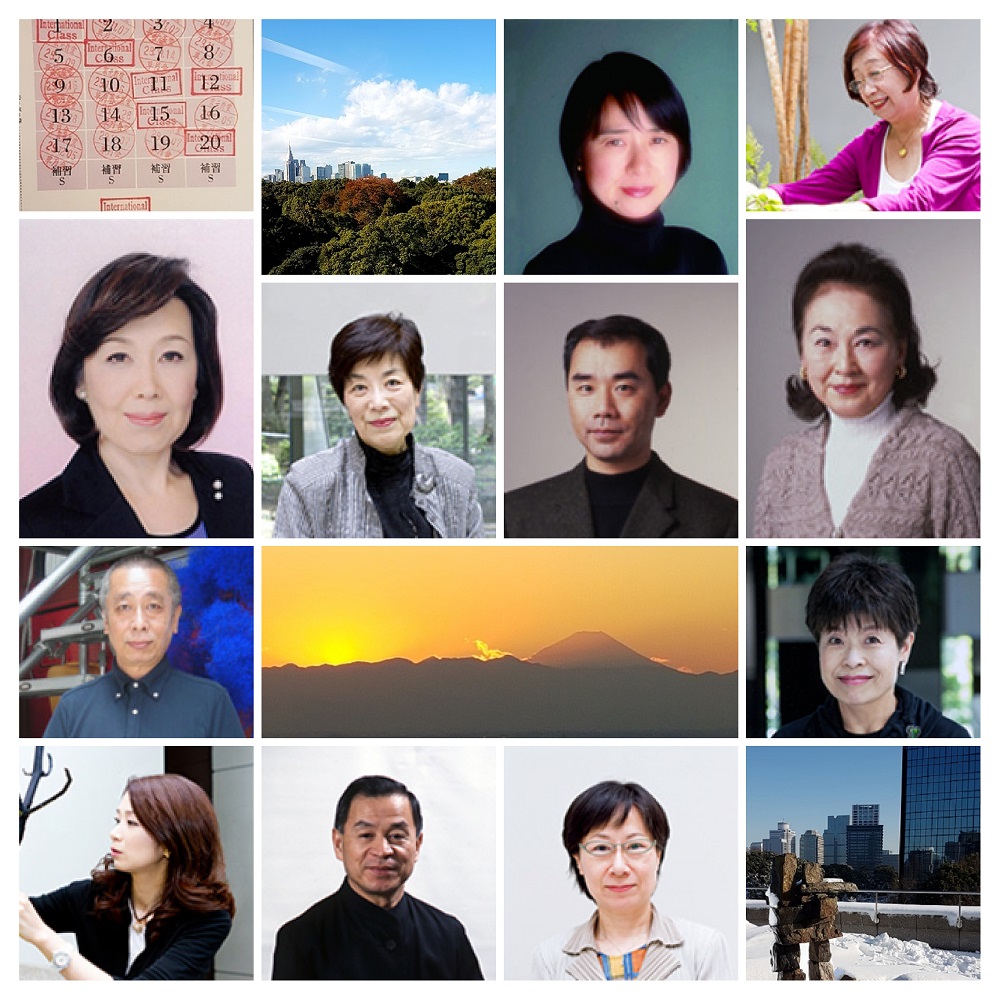The Sogetsu Kaikan classrooms overlook the Akasaka Imperial Property, Tokyo’s distant towers and the skies beyond. In addition to mind-expanding vistas, the rooms provide all material resources required for any kind of ikebana design.
The school offers an International Class in English on Mondays. On Tuesdays and Thursdays the three Iemoto Classes offered at different times during the day are taught in Japanese, but fully qualified teachers are available to interpret as well as instruct. In these two classes I joined as many as 30 to 40 like-minded individuals who were there to learn—expats and nationals—all with amazing back stories as well as brilliant creativity. In such company I was exposed to an astonishing range of designs at all levels of the curriculum.
Unlike traditional ikebana studies where a student works with a single teacher over an extended period of time, at Sogetsu Kaikan several teachers rotate through a monthly schedule. Under such a system, none would get to know me intimately during my three-month stay. The atmosphere and routines are quite different from the semi-private studies I had begun in Vancouver in 2015. However, this format of instruction suits me as well. It provides a valuable perspective on the instructors’ personalities and how that affects their proclivities pertaining to matters of design, flexibility with the rules, style and personal taste. Several years of study with a single teacher could never match that. I owe them so much and I salute them.

At the end of each lesson’s work period, the master teachers demonstrate two designs and offer technical instruction regarding various elements of the designs. Afterwards they provide individual critiques of students’ work. These assessments of multiple arrangements in rapid succession meant that I enjoyed a unique and multi-leveled overview of the many principles and nuances of the art.
Ordinarily, a beginner is not privy to that much information in such a compressed period of time. However, in my case the increased discernment coupled with multiple classes a week (rather than month-long intervals in between) better developed my skills, honed my sensitivity and boosted my motivation to work harder. I could better imagine what I might yet do.
Interestingly, this is consistent with current brain neuroplasticity research. Constant practice improves the short-term skills being acquired. However, my teachers always emphasized that the art of ikebana takes time. That is also true, for as soon as the learner pauses, the new connections in the brain begin to wither and are lost.
One of my friends from class who has recently qualified as a teacher advises in an email: At your level it´s all about the mechanics, to get the hang of various techniques, learn spacing, asymmetry, material, and so on. Make something every or every other day. It doesn’t have to be perfect but will keep your technique fresh.
Brain research also indicates that increased struggle creates more significant changes in the brain while learning; however, there is little fun in those moments that I have fumed and fretted toward elusive success. Sometimes I have wrestled with an obstinate branch or a floppy flower; other times I have learned that I’ve broken a rule that no one has told me about before I starting or while I had the time to fix it. Annoying as that is, at least I can be comforted that it has had additional, long-term benefit in the brain.
Perhaps that explains why nothing can touch the bliss of arranging the simplest elements: a container, flowers and branches. For that, I offer my tribute and gratitude to all my Tokyo teachers.
***
Portraits used in the photo collage are taken from the Sogetsu website. There you can also view various installations in the Japanese Room created by my teachers and others.
***
Some of the content in this post was previously published in “The Art of Ikebana: Insights from Tokyo” in Happenings, the newsletter of the Gallery Associates of the Art Gallery of Greater Victoria.
